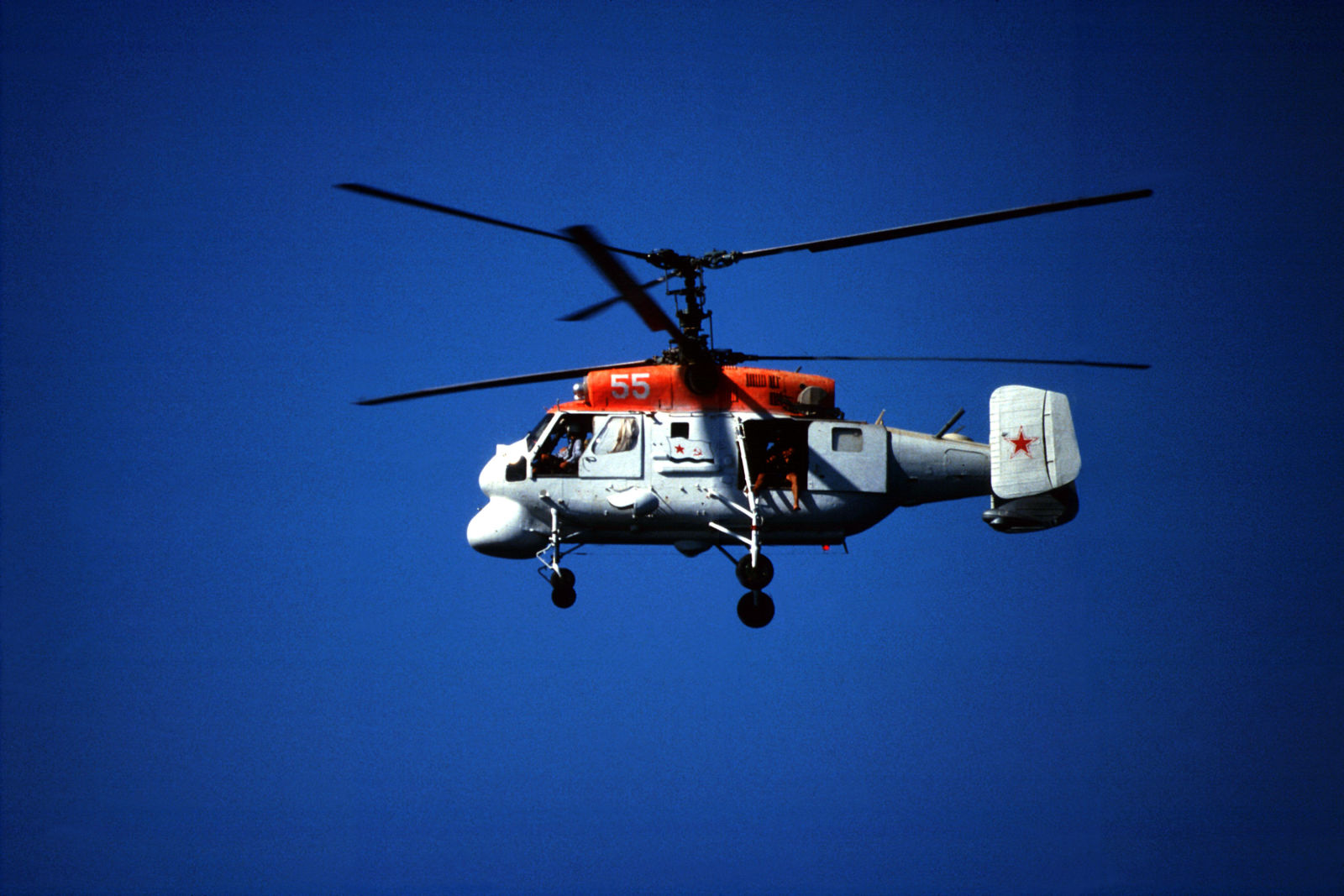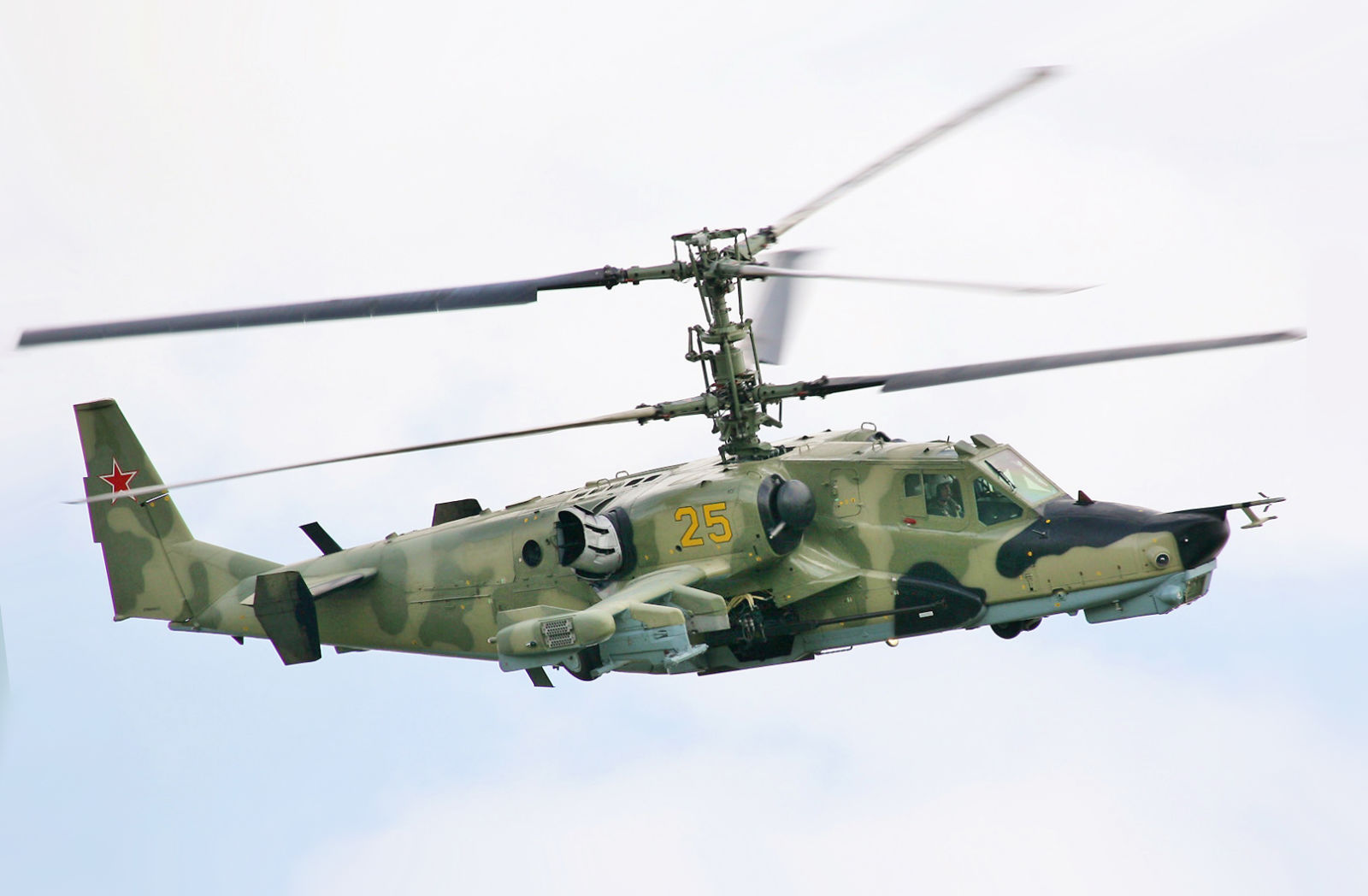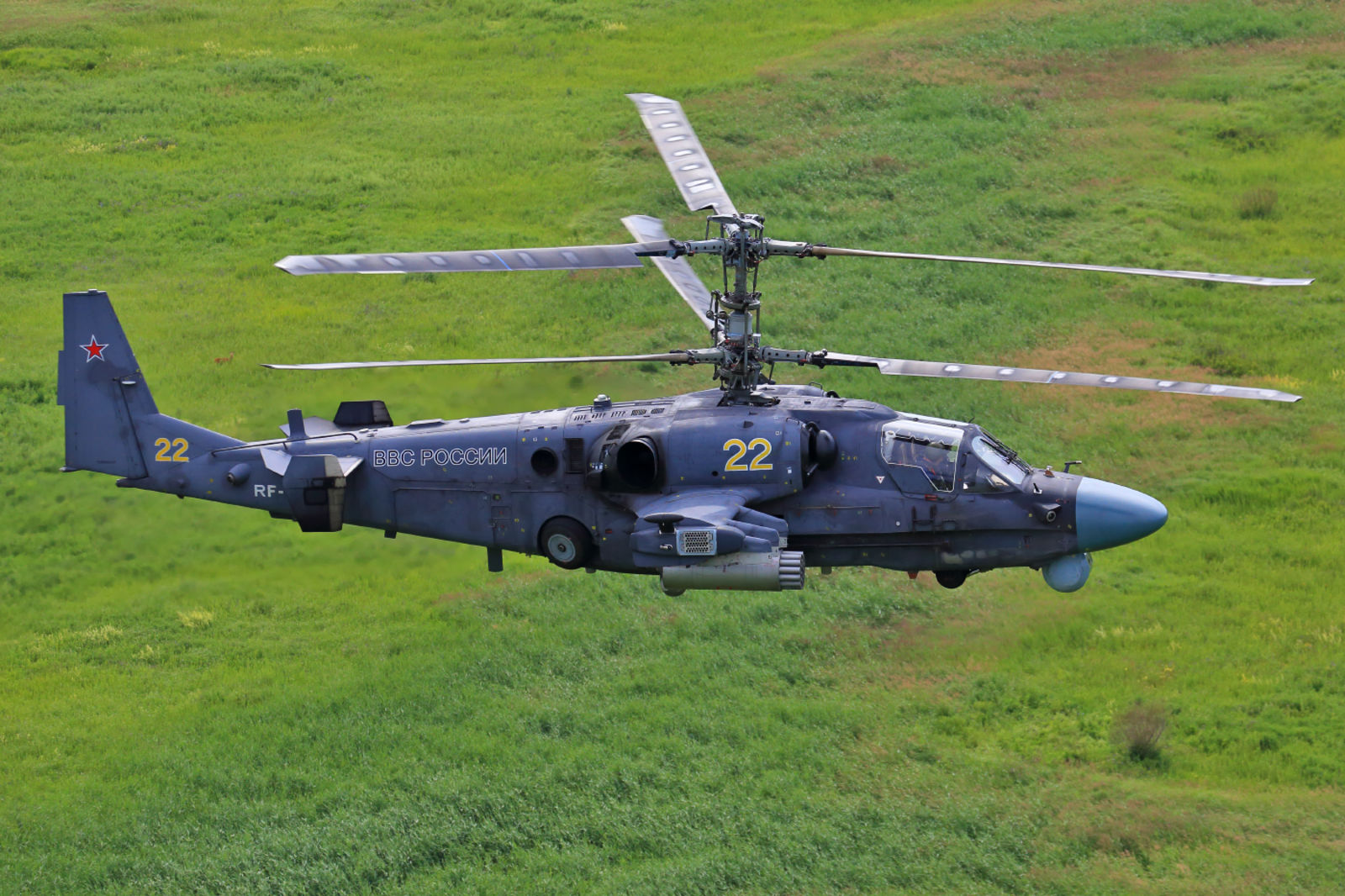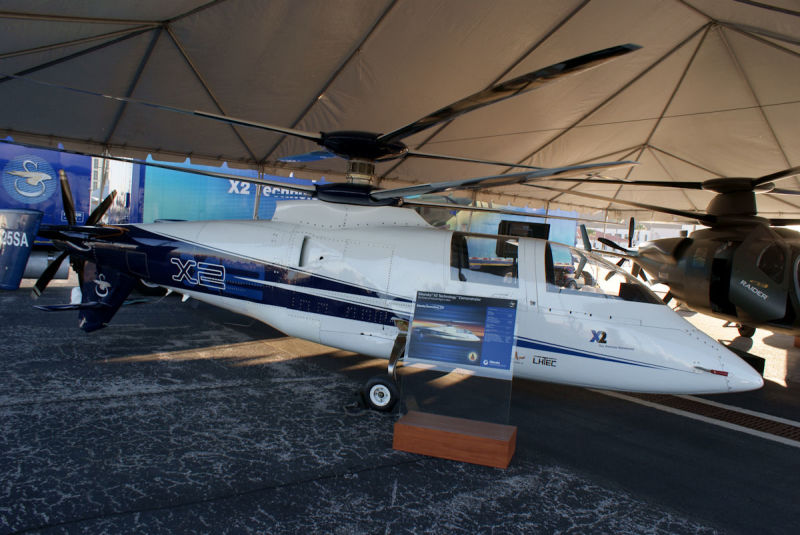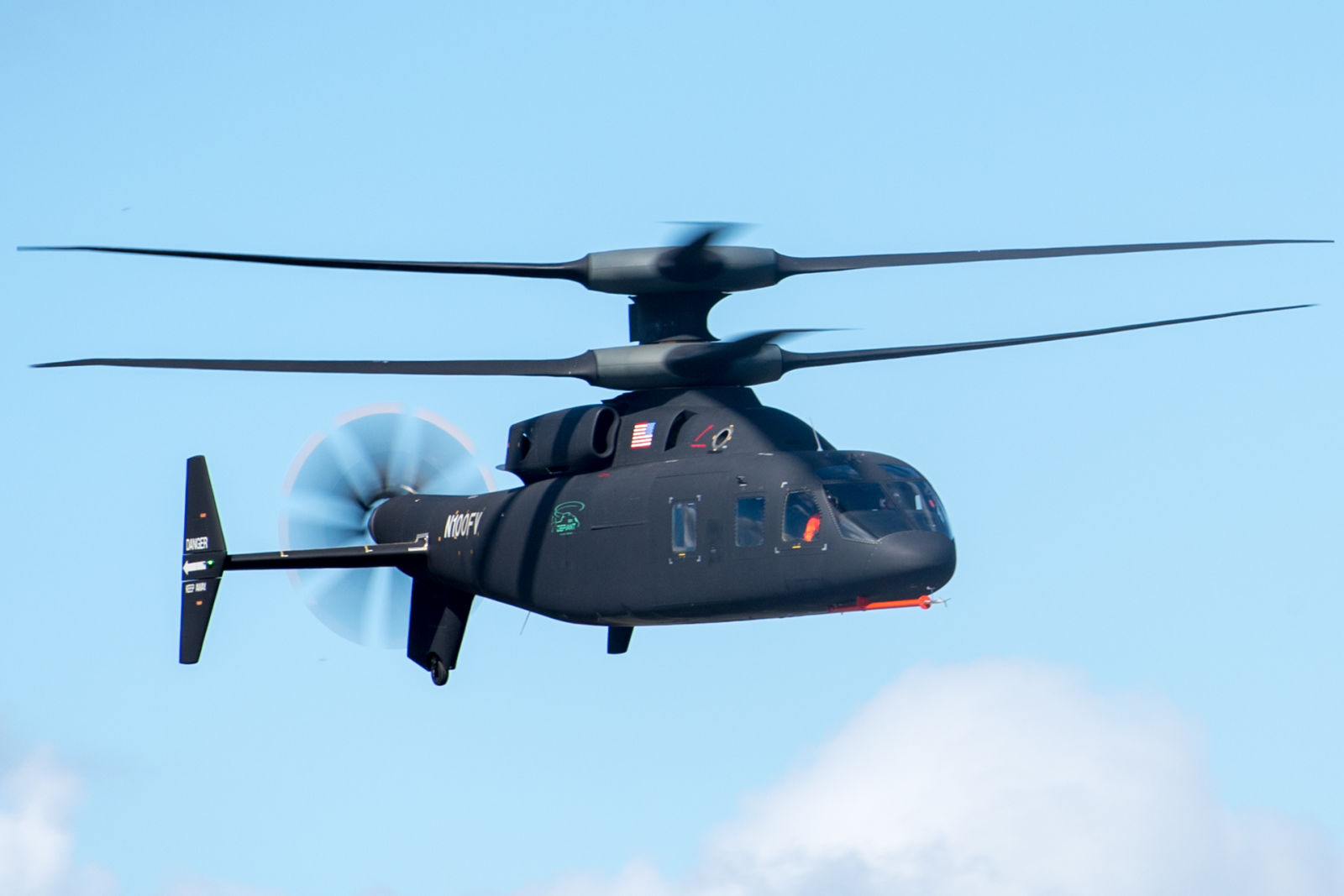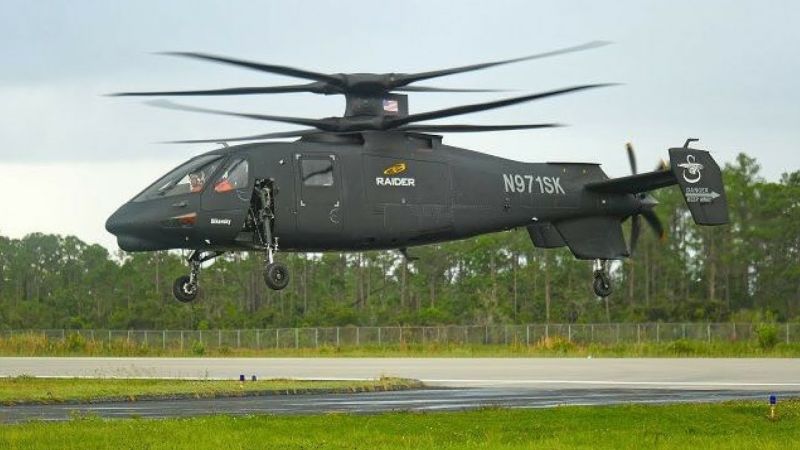One of the disadvantages of rotor-born flight is the torque produced by the rotor as it turns. This would, if not addressed, cause the fuselage of the helicopter to spin in the opposite direction of the rotor blades. Traditional helicopters counteract this force with a tail rotor, Fenestron or NOTAR, all of which are mounted perpendicular (or nearly so) to the main rotor’s plane of rotation, and act to not only prevent rotation but also to maneuver the helicopter. The disadvantage of these devices is that they rob the main rotor of power (in some cases up to 10% of the engine’s output is routed to the tail rotor), they present a hazard to ground crew when in operation, and they add weight and complexity to the chopper. Another method of stabilization are the synchropter, which has two intermeshing rotor discs, the tandem helicopter, which have two rotors spinning in opposite directions one in front of the other or (rarely) the transverse arrangement, which has the rotors side-by-side. Coaxial helicopters also use two sets of rotors, but they are mounted one atop the other. In addition to increasing the amount of power available to the rotors, coaxial designs are also quieter than traditional helos, as it is the interaction of the main and tail rotor washes that create the “whumping” sound associated with choppers. They also tend to be more compact than other designs, as they lack the long boom needed for a tail rotor, though they are taller, having stacked rotors.
The concept of coaxial rotors came from Russian-born polymath and writer Mikhail Lomonosov, who demonstrated a scale model of a coax helicopter to the Russian Academy of Sciences in 1754. About a century later, Henry Bright was awarded a patent from the British Patent Office for a coaxial design, and in the 1930s the Corradino D’Ascanio-built D’AT3 and the Gyroplane Laboratoire both demonstrated the concept in actual flight.
One of the primary designers of coaxial helicopters is JSC Kamov, which first incorporated the feature on the post-war Ka-8, which was powered by an alcohol-burning BMW motorcycle engine, and has featured prominently on its KA-25/27 ASW helis and the Ka-50/52 attack chopper.
Development of the Ka-25 (NATO reporting name “Hormone”) began in the late 1950's, as the expanding Soviet Navy required an anti-submarine helicopter. The rotor system introduced aluminium alloy blades pressurized with nitrogen for crack detection, lubricated hinges, hydraulic powered controls, alcohol deicing and automatic blade folding. ASW equipment included radar, dipping sonar and a towed MAD unit. The main production Ka-25BSh could carry a little over 4,000lbs of torpedoes or depth charges (conventional or nuclear), as well as optional extras including fold up seats for 12 passengers, rescue hoist, external auxiliary fuel tanks or containers for cameras, flares, smoke floats or beacons. In addition to the ASW variant, Kamov also introduced the KA-25BshZ mine sweeper, the Ka-25K which designed to relay over-the-horizon radar data to cruise missiles, and the Ka-25TL which was to detect US/NATO cruise missiles.
Kamov began designing a replacement for the Ka-25 in 1969, with the prototype Ka-27 (NATO reporting “Helix”) flying in 1973. Mission requirements and the need to fit in existing hangar space resulted in a broad resemblance to the Hormone, despite being a ‘clean sheet’ design. In addition to ASW and SAR variants, there is also the Ka-29 (“Helix-B”) armored assault heli, which can carry troops and/or rockets, gun pods, missiles or bombs, and the Ka-32 produced for the civilian market, with transport, fire fighting, SAR, police and aerial crane variants. The Ka-27 is in service with the Russian Navy, several client states of the former Soviet Union, and the South Korean Air Force and Coast Guard, and Ka-32s are operated by several companies around the world.
The Ka-50 Чёрная акула - ‘Black Shark’ (NATO reporting name “Hokum A”) attack choppers was originally developed in the early 1980's in competition with the Mil Mi-28 to replace the Mi-24 “Hind” as the USSR’s attack helicopter, but have since been accepted into service with the Russian Army and several other client states. The Ka-50 is rather unique in that it is flown by a single pilot instead of a pilot and weapons officer as is typical with the AH-1 Cobra, AH-64 Apache and Mi-24 “Hind”. Operational testing showed that pilot workload was similar to that of a fighter-bomber pilot, such that the pilot could perform both flying and navigation duties. Also unique was the ejection seat, the first fitted to a helicopter. Prior to firing of the seat, charges would sever the rotor blades and the canopy would be jettisoned. With the Mi-28 “Havoc” seeing service in the regular army, the Ka-50 have been accepted by Russian special forces as their support chopper.
A modification of the Ka-50, the Ka-52 Аллигатор - ‘Alligator’ (NATO reporting Name “Hokum B”) was designed to act as dedicated scout, with the forward fuselage being redesigned to accommodate a pilot and systems operator side-by-side. With the end of the Cold War and Russia’s subsequent economic issues hampered acceptance and production of the Alligator, though beginning in 2008 the Russian Air Force began acquiring two dozen Ka-52s, with an additional 150 being ordered in 2011. In 2015, Egypt ordered four dozen Ka-52 ‘Nile Crocodiles’ for its army.
A further development of the ‘Alligator’, the Ka-52K Катран - ‘Mud Shark’ is a navalized variant, featuring anti-corrosion construction, folding rotors and wings, and a new radar system. The Russian Navy had ordered the Ka-52K to fly from a force of four Mistral-class amphibious assault ships purchased from France. Due to the Russian invasion of the Crimea, the purchase was canceled, and the ships were eventually sold to Egypt. Kamov won a tender to supply the ‘Mud Sharks’ to Egypt along with their ‘Nile Crocodiles’.
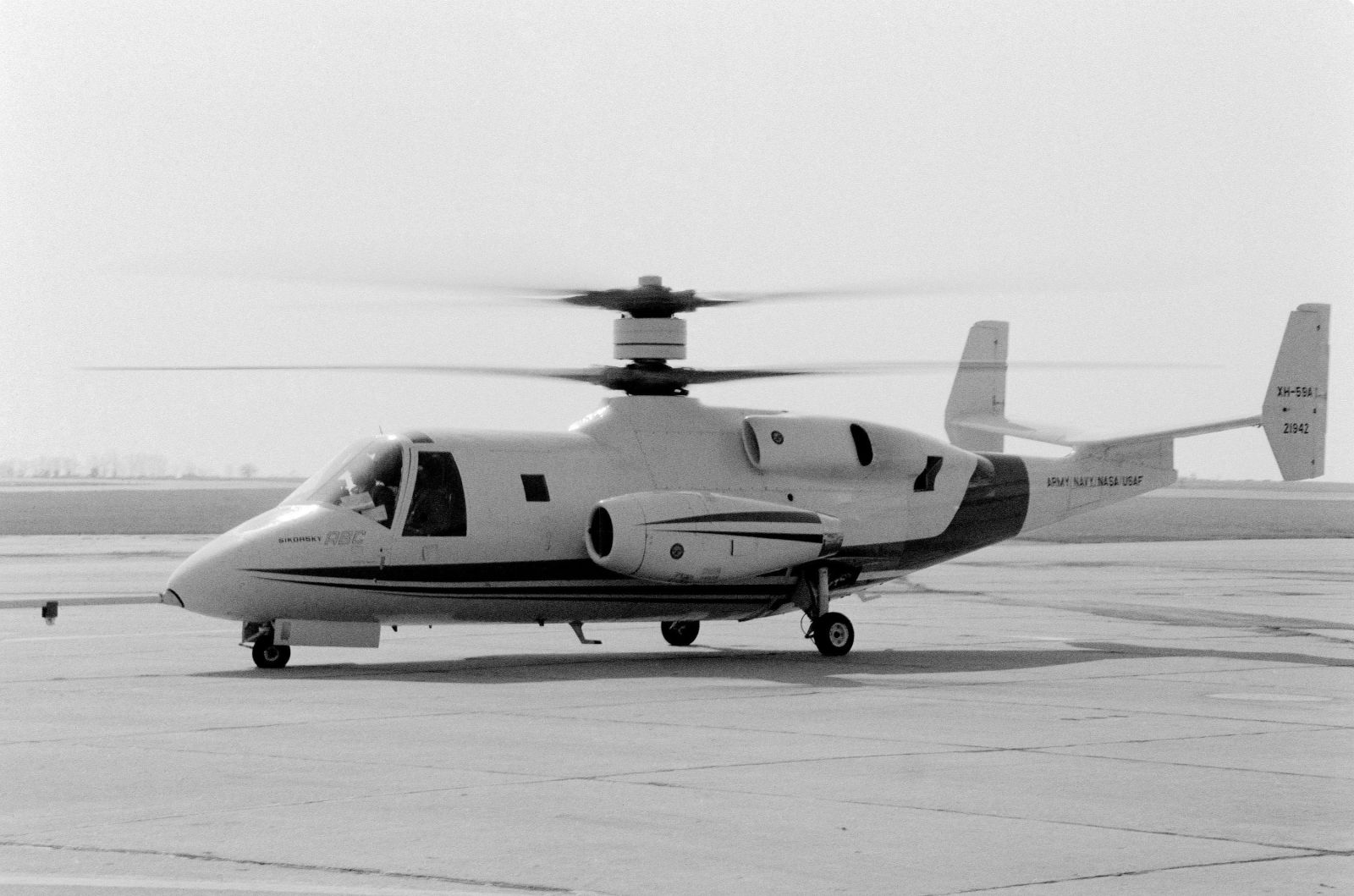
In addition to Kamov, Sikorsky has also developed coaxial designs, with their S-69 and X2 experimentals leading into the S-97 Raider and SB-1 Defiant. The S-69 and X2 are compound helicopters, with the S-69 featuring two turbojet engines for additional thrust, while the X2 had a pusher prop. The S-69 reached a top speed in level flight of 238kts, but vibration and fuel use proved to be excessive. The X2 proved to be a more refined design, without the vibration that grounded its predecessor. On 15 September 2010, test pilot Kevin Bredenbeck achieved Sikorsky’s design goal for the X2 when he flew it at a speed of 250 knots in level flight, an unofficial speed record for a helicopter. The demonstrator then reached a new record speed of 260 knots in a shallow 2˚ to 3˚ dive. Interestingly, in level flight more power is being put to the pusher prop than to the rotors, with a lift-to-drag ratio roughly twice that of a conventional helicopter.
The Sikorsky/Boeing SB-1 Defiant is a joint entry into the Army’s Future Vertical Lift program, which is seeking to develop replacements for the Army’s UH-60 Black Hawk, AH-64 Apache, CH-47 Chinook, and OH-58 Kiowa helicopters.
Broadly similar to the Defiant, the S-97 was Sikorsky’s entry into the Army’s Armed Aerial Scout program, which was canceled in 2013. The design was scaled up into the Raider X, which is in competition with the Bell 360 Invictus for the Army’s Future Attack Reconnaissance Aircraft (FARA) program.
